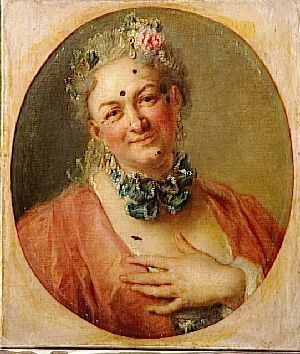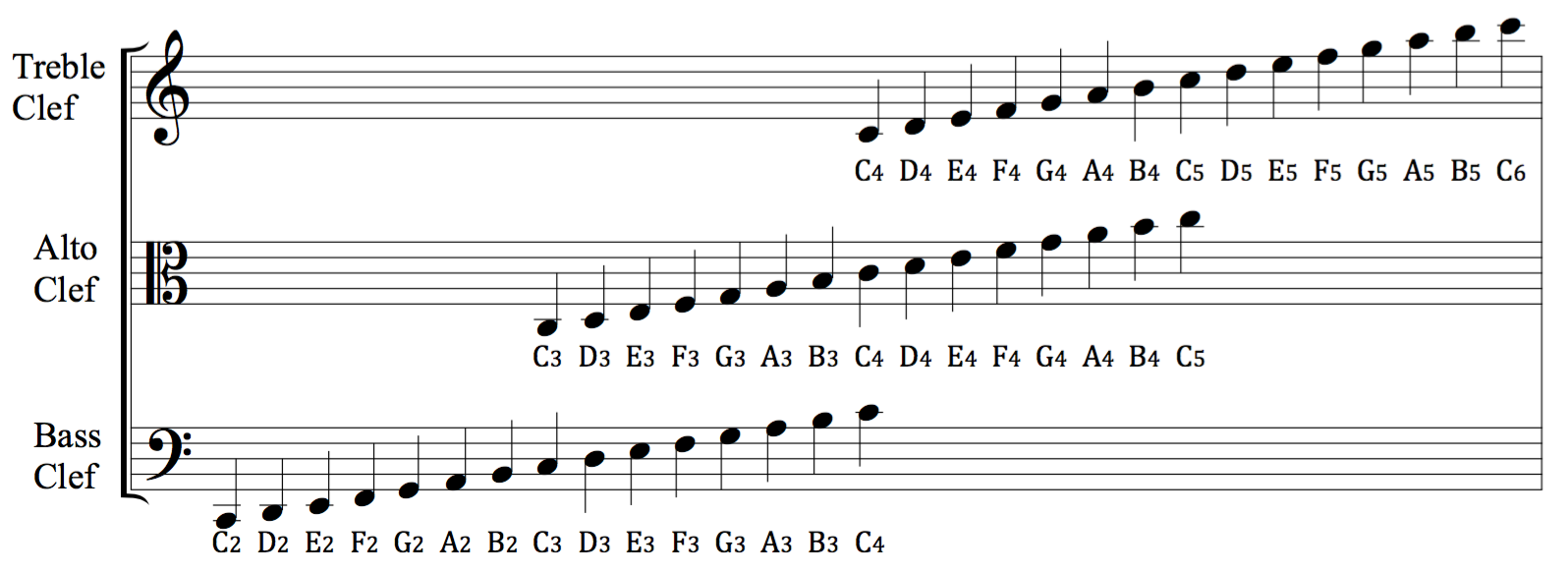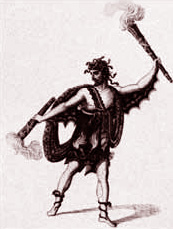|
Scylla Et Glaucus
''Scylla et Glaucus'' (''Scylla and Glaucus'') is a tragédie en musique with a prologue and five acts, the only surviving full-length opera by Jean-Marie Leclair. The French-language libretto by d'Albaret is based on Ovid's ''Metamorphoses'', books 10, 13 and 14. It was first performed at the Académie Royale de Musique in Paris on 4 October 1746. Background The quality of the vocal writing in ''Scylla et Glaucus'' came as a surprise to many, given that Leclair was much better known for composing instrumental music, and therefore had little experience in opera. By the time the ''Scylla'' was performed in 1746, Leclair was already known for his forty-eight violin sonatas, his trios, and his concertos. He received much of his musical training in Italy, where he was exposed to the influence of Pietro Locatelli and other Italian composers of the time. This is why the writing of ''Scylla'', while remaining recognizably in French, is full of italianisms. Leclair dedicated the work to ... [...More Info...] [...Related Items...] OR: [Wikipedia] [Google] [Baidu] |
Tragédie En Musique
Tragédie en musique (, ''musical tragedy''), also known as tragédie lyrique (, ''lyric tragedy''), is a genre of French opera introduced by Jean-Baptiste Lully and used by his followers until the second half of the eighteenth century. Operas in this genre are usually based on stories from Classical mythology or the Italian romantic epics of Tasso and Ariosto. The stories may not necessarily have a tragic ending – in fact, most do not – but the works' atmospheres are suffused throughout with an affect of nobility and stateliness. The standard ''tragédie en musique'' has five acts. Earlier works in the genre were preceded by an allegorical prologue and, during the lifetime of Louis XIV, these generally celebrated the king's noble qualities and his prowess in war. Each of the five acts usually follows a basic pattern, opening with an aria in which one of the main characters expresses their feelings, followed by dialogue in recitative interspersed with short arias (''petits airs'' ... [...More Info...] [...Related Items...] OR: [Wikipedia] [Google] [Baidu] |
Voice Type
A voice type is a group of voices with similar vocal ranges, capable of singing in a similar tessitura, and with similar vocal transition points ('' passaggi''). Voice classification is most strongly associated with European classical music, though it, and the terms it utilizes, are used in other styles of music as well. A singer will choose a repertoire that suits their voice. Some singers such as Enrico Caruso, Rosa Ponselle, Joan Sutherland, Maria Callas, Jessye Norman, Ewa Podleś, and Plácido Domingo have voices that allow them to sing roles from a wide variety of types; some singers such as Shirley Verrett and Grace Bumbry change type and even voice part over their careers; and some singers such as Leonie Rysanek have voices that lower with age, causing them to cycle through types over their careers. Some roles are hard to classify, having very unusual vocal requirements; Mozart wrote many of his roles for specific singers who often had remarkable voices, and some of ... [...More Info...] [...Related Items...] OR: [Wikipedia] [Google] [Baidu] |
Pierre Jélyotte
Pierre Jélyotte (13 April 1713 – 11 September 1797) was a French operatic tenor, particularly associated with works by Rameau, Lully, Campra, Mondonville and Destouches. Life and career Born Pierre Grichon in Lasseube, he studied in Toulouse (voice, harpsichord, guitar, violin, composition) and made his stage debut in Paris as a singer at the Concert Spirituel in 1733. That same year, he made his debut at the Opéra de Paris, in ''Les fêtes grecques et romaines'', by François Colin de Blamont. He thereafter created several roles in opera by Jean-Philippe Rameau, such as; ''Hippolyte et Aricie'', ''Les Indes galantes'', '' Dardanus'', and ''Zoroastre'', as well as in opera by Jean-Baptiste Lully, André Campra, and André Cardinal Destouches. In all he sang some 150 roles, sometimes dressed as a woma He often appeared at Court in Fontainebleau, where he sang Daphnis in ''Daphnis et Alcimadure'' by Jean-Joseph de Mondonville, and Colin in ''Le devin du village'' by ... [...More Info...] [...Related Items...] OR: [Wikipedia] [Google] [Baidu] |
Haute-contre
The haute-contre (plural hautes-contre) was the primary French operatic tenor voice, predominant in French Baroque and Classical opera, from the middle of the seventeenth century until the latter part of the eighteenth century. History This voice was predominantly used in male solo roles, typically heroic and amatory ones, but also in comic parts, even ''en travesti'' (see apropos the portrait reproduced below and representing Pierre Jélyotte made up for the female title role of Rameau's ''Platée''). Lully wrote 8 out of 14 leading male roles for the voice; Charpentier, who was an haute-contre himself, composed extensively for the voice-part, as did Rameau and, later, Gluck. The leading ''hautes-contre'' of the ''Académie Royale de Musique'' that created the main roles of Lully's operas, at the end of the seventeenth century, were Bernard Clédière (who started off as a ''taille'', a lower Tenor voice type) and Louis Gaulard Dumesny. Notable ''hautes-contre'' of the eighteent ... [...More Info...] [...Related Items...] OR: [Wikipedia] [Google] [Baidu] |
Marie Fel
Marie Fel (24 October 1713 – 2 February 1794) was a French opera singer and a daughter of the organist Henri Fel. Marie Fel was born at Bordeaux. She made her debut at the Paris Opera in 1733 and sang regularly at the Concert Spirituel. In a career that lasted 35 years, she sang in all the operas of Rameau along with Pierre Jélyotte, created roles in those of Mondonville, and participated in revivals of those of Lully and Campra. She retired from the stage in 1758, but continued to perform in concert until 1769. She died in Paris. She had a long-term relationship with the painter Quentin de La Tour, who painted her portrait. "The greatest personalities of her age sought her good graces and gave her lively proofs of their affections," including men of letters such as the Baron von Grimm and the Encyclopédiste Louis de Cahusac.Emile Campardon, L’Académie Royale de Musique au XVIII Siècle: Documents inédites découverts aux Archives Nationales (Paris: Berger-Levraul ... [...More Info...] [...Related Items...] OR: [Wikipedia] [Google] [Baidu] |
Scylla
In Greek mythology, Scylla), is obsolete. ( ; grc-gre, Σκύλλα, Skúlla, ) is a legendary monster who lives on one side of a narrow channel of water, opposite her counterpart Charybdis. The two sides of the strait are within an arrow's range of each other—so close that sailors attempting to avoid Charybdis would pass dangerously close to Scylla and vice versa. Scylla is first attested in Homer's ''Odyssey'', where Odysseus and his crew encounter her and Charybdis on their travels. Later myth provides an origin story as a beautiful nymph who gets turned into a monster. Book Three of Virgil's ''Aeneid'' associates the strait where Scylla dwells with the Strait of Messina between Calabria, a region of Southern Italy, and Sicily. The coastal town of Scilla in Calabria takes its name from the mythological figure of Scylla and it is said to be the home of the nymph. The idiom "between Scylla and Charybdis" has come to mean being forced to choose between two similarly danger ... [...More Info...] [...Related Items...] OR: [Wikipedia] [Google] [Baidu] |
Cupid
In classical mythology, Cupid (Latin Cupīdō , meaning "passionate desire") is the god of desire, lust, erotic love, attraction and affection. He is often portrayed as the son of the love goddess Venus (mythology), Venus and the god of war Mars (mythology), Mars. He is also known in Latin as ' ("Love"). His interpretatio graeca, Greek counterpart is Eros.''Larousse Desk Reference Encyclopedia'', The Book People, Haydock, 1995, p. 215. Although Eros is generally portrayed as a slender winged youth in Classical Greece, Classical ancient Greek art, Greek art, during the Hellenistic period, he was increasingly portrayed as a chubby boy. During this time, his iconography acquired the bow and arrow that represent his source of power: a person, or even a deity, who is shot by Cupid's arrow is filled with uncontrollable desire. In myths, Cupid is a minor character who serves mostly to set the plot in motion. He is a main character only in the tale of Cupid and Psyche, when wounded by hi ... [...More Info...] [...Related Items...] OR: [Wikipedia] [Google] [Baidu] |
Venus (mythology)
Venus (), , is a Roman goddess, whose functions encompass love, beauty, desire, sex, fertility, prosperity, and victory. In Roman mythology, she was the ancestor of the Roman people through her son, Aeneas, who survived the fall of Troy and fled to Italy. Julius Caesar claimed her as his ancestor. Venus was central to many religious festivals, and was revered in Roman religion under numerous cult titles. The Romans adapted the myths and iconography of her Greek counterpart Aphrodite for Roman art and Latin literature. In the later classical tradition of the West, Venus became one of the most widely referenced deities of Greco-Roman mythology as the embodiment of love and sexuality. She is usually depicted nude in paintings. Etymology The Latin theonym ''Venus'' and the common noun ''venus'' ('love, charm') stem from a Proto-Italic form reconstructed as ''*wenos-'' ('desire'), itself from Proto-Indo-European (PIE) ' ('desire'; cf. Messapic ''Venas'', Old Indic ''vánas'' 'de ... [...More Info...] [...Related Items...] OR: [Wikipedia] [Google] [Baidu] |
Clef
A clef (from French: 'key') is a Musical notation, musical symbol used to indicate which Musical note, notes are represented by the lines and spaces on a musical staff (music), stave. Placing a clef on a stave assigns a particular pitch to one of the five lines, which defines the pitches on the remaining lines and spaces. The three clef symbols used in modern music notation are the #G-clefs, G-clef, #F-clefs, F-clef, and #C-clefs, C-clef. Placing these clefs on a line fixes a reference note to that line—an F-clef fixes the F below middle C, a C-clef fixes middle C, and a G-clef fixes the G above middle C. In modern music notation, the G-clef is most frequently seen as treble clef (placing Scientific pitch notation, G4 on the second line of the stave), and the F-clef as bass clef (placing F3 on the fourth line). The C-clef is mostly encountered as alto clef (placing middle C on the third line) or tenor clef (middle C on the fourth line). A clef may be placed on a space ins ... [...More Info...] [...Related Items...] OR: [Wikipedia] [Google] [Baidu] |
Baritenor
Baritenor (also rendered in English language sources as bari-tenor or baritenore) is a portmanteau (blend) of the words "baritone" and "tenor." It is used to describe both baritone and tenor voices. In ''Webster's Third New International Dictionary'' it is defined as "a baritone singing voice with virtually a tenor range." However, the term was defined in several late 19th century and early 20th century music dictionaries, such as ''The American History and Encyclopedia of Music'', as "a low tenor voice, almost barytone sic.html"_;"title="'sic">'sic''" _In_opera Baritenor_(or_its_Italian_language.html" "title="sic">'sic''.html" ;"title="sic.html" ;"title="'sic">'sic''">sic.html" ;"title="'sic">'sic''" In opera Baritenor (or its Italian language">Italian form, ''baritenore'') is still used today to describe a type of tenor voice which came to particular prominence in Rossini's operas. It is characterized by a dark, weighty lower octave and a ringing upper one but with sufficient ... [...More Info...] [...Related Items...] OR: [Wikipedia] [Google] [Baidu] |
Tenor
A tenor is a type of classical music, classical male singing human voice, voice whose vocal range lies between the countertenor and baritone voice types. It is the highest male chest voice type. The tenor's vocal range extends up to C5. The low extreme for tenors is widely defined to be B2, though some roles include an A2 (two As below middle C). At the highest extreme, some tenors can sing up to the second F above middle C (F5). The tenor voice type is generally divided into the ''leggero'' tenor, lyric tenor, spinto tenor, dramatic tenor, heldentenor, and tenor buffo or . History The name "tenor" derives from the Latin word ''wikt:teneo#Latin, tenere'', which means "to hold". As Fallows, Jander, Forbes, Steane, Harris and Waldman note in the "Tenor" article at ''Grove Music Online'': In polyphony between about 1250 and 1500, the [tenor was the] structurally fundamental (or 'holding') voice, vocal or instrumental; by the 15th century it came to signify the male voice that ... [...More Info...] [...Related Items...] OR: [Wikipedia] [Google] [Baidu] |
En Travesti
En or EN may refer to: Businesses * Bouygues (stock symbol EN) * Esquimalt and Nanaimo Railway (reporting mark EN, but now known as Southern Railway of Vancouver Island) * Euronews, a news television and internet channel Language and writing * En or N, the 14th letter of the Roman alphabet * EN (cuneiform), the mark in Sumerian cuneiform script for a High Priest or Priestess meaning "lord" or "priest" * En (Cyrillic) (Н, н), a letter of the Cyrillic alphabet, equivalent to the Roman letter "n" * En (digraph), ‹en› used as a phoneme * En (typography), a unit of width in typography ** en dash, a dash one en long * En language, a language spoken in northern Vietnam * English language (ISO 639-1 language code en) Organisations * Eastern National, a US organization providing educational products to National Park visitors * English Nature, a former UK government conservation agency * Envirolink Northwest, an environmental organization in England Religion * En (deity) in Alb ... [...More Info...] [...Related Items...] OR: [Wikipedia] [Google] [Baidu] |






